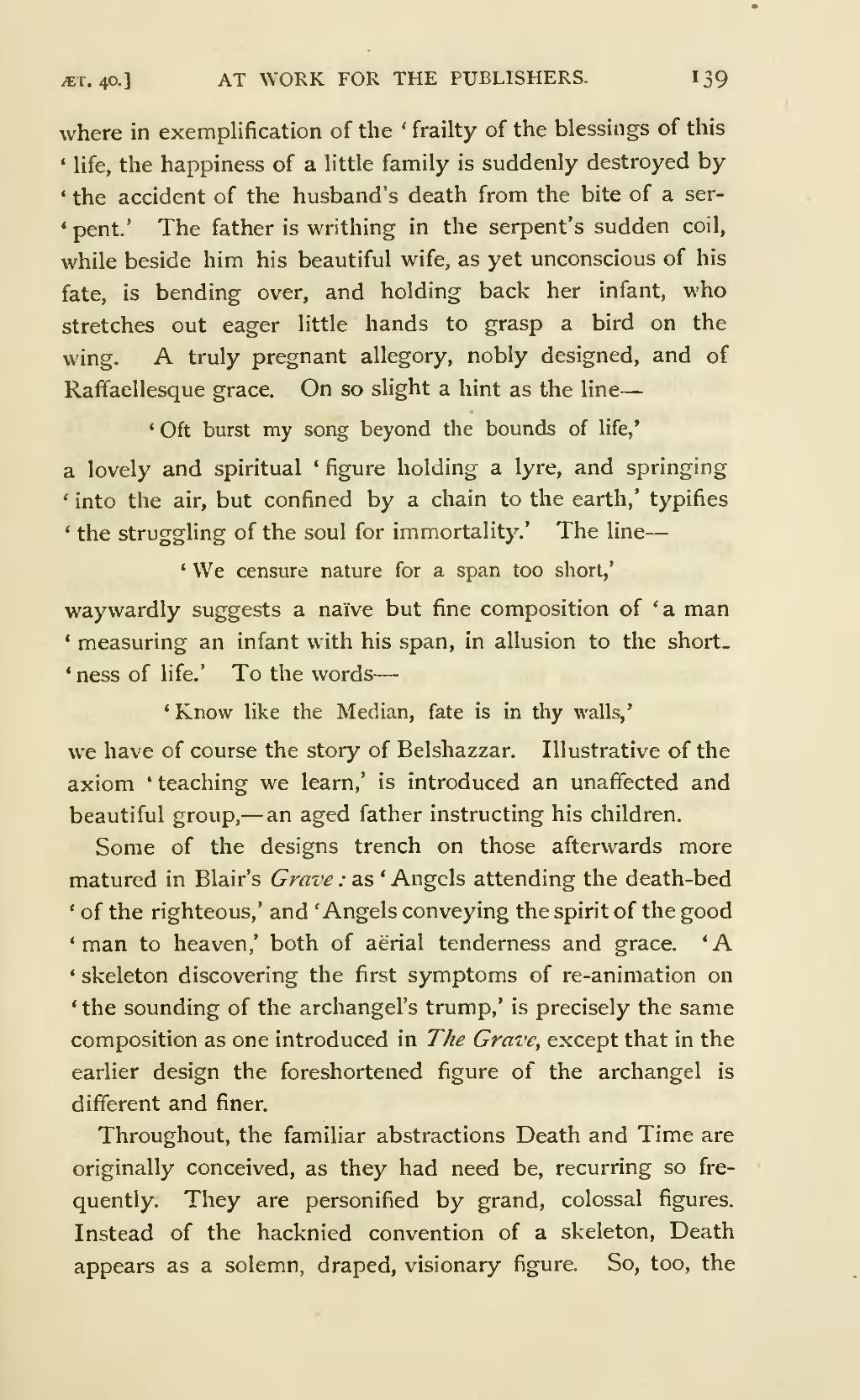where in exemplification of the 'frailty of the blessings of this life, the happiness of a little family is suddenly destroyed by the accident of the husband's death from the bite of a serpent.' The father is writhing in the serpent's sudden coil, while beside him his beautiful wife, as yet unconscious of his fate, is bending over, and holding back her infant, who stretches out eager little hands to grasp a bird on the wing. A truly pregnant allegory, nobly designed, and of Raffaellesque grace. On so slight a hint as the line—
'Oft burst my song beyond the bounds of life,'
a lovely and spiritual 'figure holding a lyre, and springing into the air, but confined by a chain to the earth,' typifies the struggling of the soul for immortality,' The line—
'We censure nature for a span too short,'
waywardly suggests a naïve but fine composition of 'a man measuring an infant with his span, in allusion to the shortness of life.' To the words—
'Know like the Median, fate is in thy walls,'
we have of course the story of Belshazzar. Illustrative of the axiom 'teaching we learn,' is introduced an unaffected and beautiful group,—an aged father instructing his children.
Some of the designs trench on those afterwards more matured in Blair's Grave: as 'Angels attending the death-bed of the righteous,' and 'Angels conveying the spirit of the good man to heaven,' both of aërial tenderness and grace. 'A skeleton discovering the first symptoms of re-animation on the sounding of the archangel's trump,' is precisely the same composition as one introduced in The Grave, except that in the earlier design the foreshortened figure of the archangel is different and finer.
Throughout, the familiar abstractions Death and Time are originally conceived, as they had need be, recurring so frequently. They are personified by grand, colossal figures. Instead of the hacknied convention of a skeleton, Death appears as a solemn, draped, visionary figure. So, too, the
